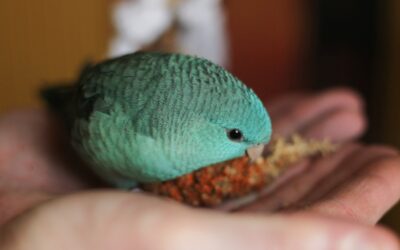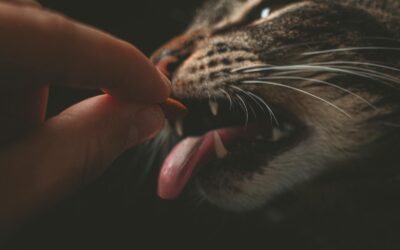Thinking of getting a few ducks to keep as pets? Nice choice! Although ducks are commonly kept for their meat or eggs, they can actually be highly social and friendly too. This makes them a great choice for the right owner, especially if you’re looking for an animal that’s both useful and easygoing. But not all ducks were made equal: some breeds are more cuddly than others. So which are the best ducks for pets?
Below, we’ll have a look at 6 beautiful duck breeds to consider keeping as pets (plus one bonus species!). Which one’s your favorite?
Are ducks right for you?
Before we go into our list of the best ducks for pets, let’s take a short moment to consider whether ducks are right for you. It’s really easy to fall for ducks’ charms: they’re so waddly and cute! Baby ducklings in particular are mind-meltingly adorable, and we’d all love to take one home whenever we see them. And indeed, ducks can make really good pets, plus they’re useful thanks to their egg-laying abilities. But remember there are also some downsides.
Before you run out to buy some ducklings, consider the following:
- Ducks are messy! They can turn any pond into a mud pool, and their abundant poop can quickly ruin the water quality (plus present a slipping danger all over your yard and ruin your lawn).
- Ducks can be LOUD. All the honking, quacking, and other noises may end up being annoying to you (and your neighbors).
- Ducks, even the tiny breeds, need space. You’ll have to provide a suitable body of water, and preferably a nice, large area for the ducks to forage in.
- It’s usually considered a must to keep multiple ducks. They’re highly social and feel safer in groups.
- Even if you pick one of the breeds from our list of best ducks for pets, whether your ducks will turn out friendly always depends on the individual. Raising yours from a young age and spending lots of time with them will help immensely, but sometimes you just get unlucky.
Raising ducks takes time and money. However, it can also be really rewarding! In the end, it all depends on what you’re looking for in a pet and how much effort and funds you’re willing to invest. Remember, these waterfowl can live for 10+ years, so they’re a long-term commitment.
Now, without further ado: Kate’s K9 Pet Care’s 6 favorite ducks to keep as pets.

It’s incredibly easy to fall for the cuteness of a duckling, but remember that pet ducks can live for 10+ years.
The 6 best ducks for pets
Welsh harlequin duck
How pretty is the Welsh harlequin?! The result of a color mutation in Khaki Campbell ducks, which are mostly kept for their eggs, harlequins sport beautiful light brown plumage. The females have distinctive black bills. This is considered to be one of the best ducks for pets by many duck enthusiasts, as the breed is known for its friendly and relaxed disposition.
Welsh harlequins are relatively small, up to 5.5 pounds, and don’t fly. They’re excellent layers (sometimes exceeding 300 eggs a year), but unlike their Khaki Campbell ancestors, they actually tend to be very diligent about brooding and usually make great mothers. The breed is not prone to health issues, and excellent at foraging for its own food.
Can you see why we placed the Welsh harlequin at the top of this list? As far as ducks go, this one really does tick all the boxes!

Pekin duck
Here’s a typical-looking duck if there ever was one! As its name suggests, the Pekin duck breed’s origins are in China. However, it’s actually considered an American breed: the original brood stock was brought to the USA in the late 19th century in order to develop an ideal duck to raise for its meat. That’s why they’re big, white-feathered (harder to see leftover feathers on a carcass), and fast-growing.
The Pekin is still one of the most popular ducks to raise for consumption, but hobbyist duck enthusiasts have also caught on. This is because Pekins aren’t just easy to find and cheap to buy, they’re also known to be super friendly! If you spend plenty of time with your Pekin ducks, they’re likely to become very tame and enjoy hanging out with you.
Pekins are pretty good layers (200 eggs a year isn’t unusual), but they don’t really make for good mothers. They can also be noisy and prone to health issues due to having been bred for chunkiness and quick growth, especially the XL subset known as jumbo Pekins. However, they’re generally considered worth it thanks to their lovely personalities.

Cayuga duck
We think all the ducks on this list are pretty to look at, but the Cayuga is certainly the most “high-fashion” breed we’re featuring here! It wasn’t even bred for its color—it was actually the principal meat duck in the USA before the introduction of the aforementioned Pekin—but it’s easy to see why many pet duck lovers have a soft spot for it. That dark, iridescent green to blue plumage really is very spectacular when the sun catches it just right.
The Cayuga is an American breed, and was named for the indigenous people in the New York area, where it’s originally from. These ducks can be a little more aloof and skittish than the breeds mentioned so far, but with proper socialization, your Cayugas can grow up to be perfectly calm and friendly. They weigh up to 8 pounds, don’t fly, and are average egg producers (up to 150).

Call duck
If Cayugas are the most fashionable pet duck breed, then call ducks are by far the cutest. Sure, they’re noisy as heck, not productive layers at all, can fly, are often expensive to buy and may become pretty standoffish if they aren’t given a lot of attention from an early age—but they’re so adorable that no one really cares. Although white is the most popular color, they actually come in a range of different feather hues.
Among the smallest duck breeds at a maximum weight of around 1.7 pounds, the call duck was originally bred as a decoy duck. Its loud calls (the females are especially noisy) would help lure wild ducks into traps. It’s not entirely clear where these ducks came from, and they actually became pretty rare for a while in the past, but their popularity has exploded in recent years and they’re pretty common now.
To sum things up, call ducks aren’t the easiest or cheapest ducks to raise. However, they can become very friendly with the right socialization, and their small size does make them more convenient than big Pekins or Cayugas.

Buff Orpington duck
Yes, Buff Orpington duck, not chicken! Although the chicken breed of the same name is more well-known, the Buff Orpington (or just buff, or just Orpington) duck actually makes an excellent choice if you’re interested in keeping a flock of pet ducks. The “buff” part refers to the breed’s color (tan, blond, or brown), while Orpington is the name of the town in England where it was developed.
Buff Orpingtons, which can weigh up to 8 lbs, make for lovely pet ducks. Aside from their nice looks, they’re good layers (up to 200 eggs a year), don’t fly, and are efficient foragers. The females are pretty good mothers. Most importantly for folks looking for pets rather than meat or eggs, buffs are also generally pretty docile and can be very friendly.
So does this breed have any downsides? Well, not really, but finding buffs can be a real challenge! They’re considered a rare, threatened type of duck. The Livestock Conservancy, for example, considers them a breed in need of monitoring. As a result of their rarity, they can be expensive. The nice thing is that by breeding them you can make a real difference in helping to sustain the breed!

Rouen duck
Is that an XL mallard? No, but it’s understandable you’d think so! Rouen ducks, which do indeed originate from the French city of Rouen, really do look like extra-chunky versions of their wild cousins. Like most of the other ducks on this list, Rouens were originally bred for their meat and (though less so) for their eggs. And they are indeed perfect for these purposes, weighing up to 8 pounds and laying a pretty fair ~150 eggs a year.
The Rouen duck is a nice all-rounder, great for folks looking for a useful pet. The breed is common and not expensive to buy, and it’s known for being mellow, friendly, and easy-going. It doesn’t fly, and you can instead expect your flock to waddle behind you all over the garden. Do keep in mind that Rouens can be loud, so they’re not the best if you live in a densely populated area.

BONUS: Muscovy duck
We’ve filed the Muscovy duck as a bonus because it’s so different from all the others on this list! We’ve even seen it referred to as not being a real duck, and we get why—it looks like a duck and walks like a duck, but it sure doesn’t quack or swim like one. Naturally found in the Americas, all the way from southern Texas down to northern Argentina, it hasn’t descended from mallards (Anas platyrhynchos) like other domestic ducks. Instead, it forms its own species: Cairina moschata.
So what sets Muscovy ducks apart from other duck breeds? And why does it make a good pet? Well, first off, although the females stay a lot smaller, male Muscovies are huge. They can surpass even jumbo Pekins in weight: up to 15 pounds! Both sexes, but the boys in particular, also sport exposed, wrinkly red or black skin on their faces. These are called wattles or caruncles. Some folks think they make Muscovy ducks look ugly, but we think it just adds to their charm.
Another characteristic that set Muscovies apart is their silence. They do quack occasionally, but much less so than other ducks. Mostly, the males make a sort of hissing noise, while the females produce a cooing sound. And lastly, Muscovies aren’t really avid swimmers. They do like the water, but you won’t see them hanging out in the pond nearly as much as most duck breeds.
Muscovies are widely beloved due to their lovely personalities. They don’t lay much, can fly, and are not very cold hardy, which can be considered downsides. However, a well-socialized Muscovy duck will be very friendly, curious, and chilled out, which is what makes them more than worth it for a lot of duck owners.

Conclusion
It’s not easy to tell which are the best ducks for pets, because in the end, it all comes down to the individual. You can never predict how a bird is going to turn out, although a lot of it is in your own hands. And as you’ve hopefully concluded, if you’re looking to add a flock of ducks to your family, you’ve got plenty of amazing breeds to choose from.
PS: Looking for a smaller type of pet bird that doesn’t create as much mess as a duck? Check out our lists of smallest chicken breeds and best pet quail breeds!







